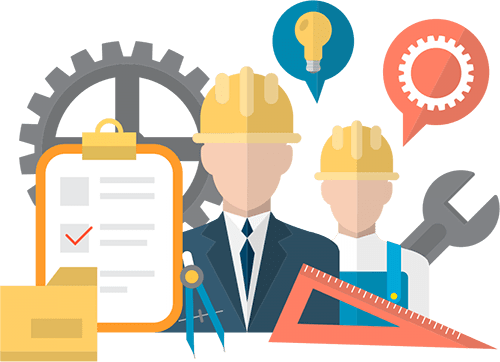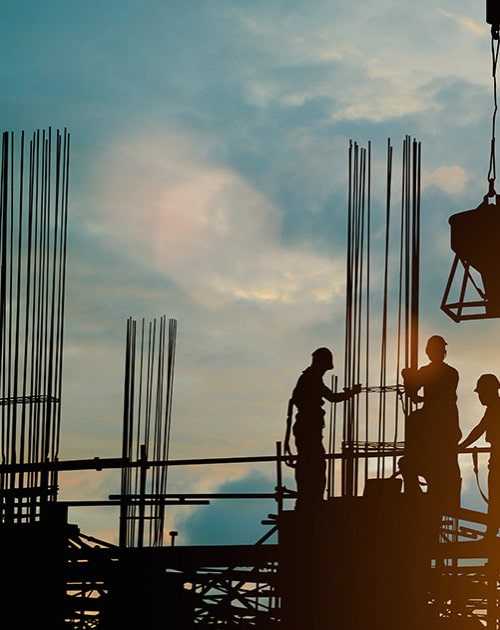The construction industry is undergoing a technological revolution, and Artificial Intelligence (AI) is at the center of this transformation. Once dominated by traditional methods and manual labor, construction is now benefiting from AI-driven solutions that optimize designs, predict failures, and streamline building processes.
For homeowners, contractors, and developers in Redmond and the Eastside, integrating AI-powered tools can lead to safer, more efficient, and cost-effective construction projects. Whether designing a new home, reinforcing existing structures, or managing large-scale developments, AI is reshaping how buildings are constructed and maintained.

How AI is Optimizing Structural Design
1. AI-Generated Building Designs
Traditionally, architects and engineers relied on manual calculations and experience to develop structural designs. Today, AI-powered design tools can:
✅ Optimize materials and structural integrity – AI analyzes factors like load distribution, wind resistance, and seismic activity to enhance durability.
✅ Reduce material waste – AI can suggest precise material quantities, minimizing excess concrete, drywall, and steel.
✅ Generate multiple design iterations in minutes – Instead of relying on trial and error, AI-powered software like Generative Design can create thousands of variations and recommend the best options.
🔹 Example: Some general contractors in Redmond now use AI-driven architecture software to optimize home layouts for maximum efficiency and sustainability.
Predicting and Preventing Structural Failures with AI
2. AI for Real-Time Structural Health Monitoring
One of the most game-changing applications of AI is predicting structural weaknesses before they cause major failures.
✅ AI-powered sensors embedded in concrete and steel can monitor stress levels, cracks, and corrosion, providing real-time alerts.
✅ Machine learning algorithms analyze past failures to identify buildings at high risk of collapse.
✅ AI-powered drones conduct automated inspections of bridges, high-rises, and tunnels, identifying structural damage in hard-to-reach places.
🔹 Example: In earthquake-prone areas like Seattle and Redmond, AI is being used to assess older buildings for seismic risks and recommend retrofits before disasters strike.
AI-Driven Construction Management & Efficiency
3. AI-Powered Project Management for Faster, Cost-Effective Builds
One of the biggest challenges in construction is delays, budget overruns, and inefficiencies. AI is now being used to:
✅ Automate scheduling – AI tracks weather patterns, worker availability, and supply chain issues to prevent delays.
✅ Predict cost overruns – AI analyzes data from past projects to identify potential budget issues before they occur.
✅ Optimize labor allocation – AI ensures the right workers are assigned to the right tasks, reducing downtime.
🔹 Example: Some home improvements in Redmond now use AI-powered scheduling tools, cutting project timelines by 20-30% and reducing unexpected costs.
4. AI-Driven Robotics: Automating Construction Work
The combination of AI and robotics is helping to automate repetitive, labor-intensive construction tasks, including:
✅ AI-powered concrete printers – Capable of building entire walls and homes in a fraction of the time compared to traditional methods.
✅ Robotic bricklayers – Lay bricks and apply mortar faster and more precisely than human workers.
✅ Autonomous heavy machinery – AI-controlled bulldozers, cranes, and excavators improve accuracy and safety on job sites.
🔹 Example: Some construction firms are now using AI-powered drywall installation robots, reducing manual labor costs and speeding up finishing work on new builds.
AI & Safety: Reducing Risks on Construction Sites
5. AI for Worker Safety & Risk Prevention
Construction sites are among the most dangerous workplaces, but AI is helping to reduce accidents and improve worker safety through:
✅ AI-driven site monitoring – Cameras with AI can detect unsafe worker behaviors and send real-time alerts.
✅ Wearable AI sensors – Monitor worker fatigue, heat stress, and hazardous exposure to prevent accidents.
✅ Predictive safety analysis – AI analyzes accident reports and identifies high-risk areas on job sites.
🔹 Example: In high-risk areas like skyscraper construction sites, AI-powered helmets are being used to warn workers of potential hazards, reducing injuries by up to 30%.
AI-Enhanced Smart Buildings & Long-Term Efficiency
6. AI for Smart Infrastructure & Energy Management
AI isn’t just changing how buildings are constructed—it’s also enhancing how they operate after completion.
✅ AI-powered HVAC systems – Learn usage patterns to optimize heating and cooling, reducing energy costs.
✅ Smart glass & shading systems – Automatically adjust window tint based on sunlight exposure, keeping buildings cooler in summer and warmer in winter.
✅ AI-driven predictive maintenance – Monitors plumbing, electrical, and HVAC systems to detect small issues before they turn into costly repairs.
🔹 Example: Some commercial buildings in Redmond and Bellevue now use AI-driven energy management systems, cutting electricity bills by 30-50%.
Why AI-Driven Construction Matters for Redmond & the Eastside
For homeowners, businesses, and developers in Redmond and the Eastside, AI-driven construction offers:
✅ More affordable and efficient home improvements
✅ Safer, longer-lasting structures with predictive maintenance
✅ Smarter project management to prevent cost overruns and delays
✅ AI-enhanced safety to protect workers and prevent injuries
As AI technology continues to evolve, we can expect:
🔹 More fully autonomous construction sites
🔹 Advanced disaster-proof buildings
🔹 Energy-efficient smart cities built with AI-optimized designs
For anyone considering new construction, renovations, or commercial projects, working with AI-driven construction firms is the key to future-proofing any project.
Final Thoughts: AI is Reshaping the Future of Construction
The integration of AI in construction is no longer a concept for the future—it’s already revolutionizing how buildings are designed, built, and maintained. From optimized structural designs and predictive safety measures to AI-driven robotics and energy efficiency, AI is paving the way for smarter, faster, and safer construction.
For those in Redmond, Bellevue, and beyond who want to take advantage of AI-driven construction, partnering with a forward-thinking general contractor ensures projects are built with cutting-edge technology and maximum efficiency.

